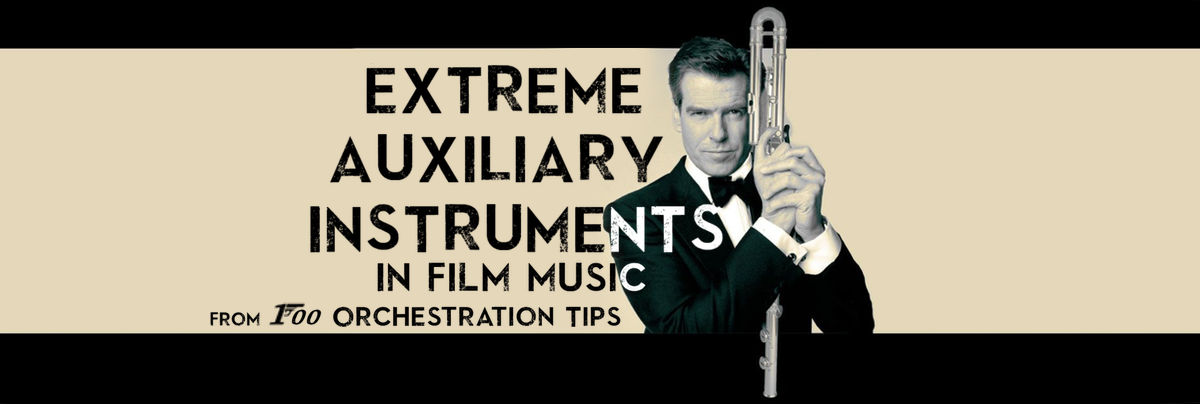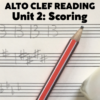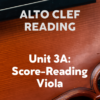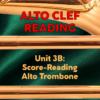(Tip no. 5 from 100 Orchestration Tips)
For every orchestral family, there are always auxiliary instruments: holdovers from older periods, like the viola d’amore or the oboe d’amore; or extensions of range like the piccolo or bass clarinet. Then there are the extreme auxiliaries, which push the range of the families in strange directions, usually downwards: the bass flute, the baritone oboe/heckelphone, the contrabass clarinet.
In orchestration manuals, you’ll run across cautions when reading up on many of these less common auxiliary instruments. Here’s one from the 1955 edition of Walter Piston’s “Orchestration:” “The contrabass clarinet is as yet too great a rarity to be considered an available resources in symphonic composition.”
Professor Piston inadvertently put a huge blind spot into his otherwise worthy tome. While thousands of orchestration students in the late 1950’s to mid-70’s were reading this passage and sighing with regret, millions of Americans were listening to the contrabass clarinet constantly. They didn’t know what it was, and might not even be paying attention. But they reacted most appropriately to the low rumblings coming out of their tiny TV speakers with feelings of disquiet, suspense, even horror. The contrabass clarinet was much easier to hear within the limited sound spectrum because of its overtones, easily trumping the somewhat muffled contrabassoon. And it was brilliant in duo or trio with bass clarinets, possessing the ability to have beautifully fine-tuned intonation at the lowest pitches.
A scene from the 1967 Star Trek episode “Catspaw.” From 0:19, composer Gerald Fried scores a duet between bass and contrabass clarinets.
The orchestrators for “Gunsmoke” used the E-flat contrabass quite often for both agility in its middle register and its ability to go down much deeper than the bass clarinets of the day. Listen from 9:05 to how the contrabass clarinet easily underpins the entire cue, even when the brass come in.
Sam Adler’s “The Study of Orchestration” is a little bit hipper: “…because [the bass flute] is relatively newer and still very expensive, few orchestras have one and few composers score for it. It can be found, however, in solo and chamber music and in some film and band scores.” Precisely, Mr. Adler. In fact, the sound of the bass flute is also well-known to viewers of film and television, where it is often found in the scores of many an action/adventure script, especially those dealing with some sort of covert action. Composers of the 1960’s and 70’s used it so often that it became a kind of auditory cliché to hear it playing a motive in an octatonic scale, solo or in harmonies with C flute in its lowest octave.
Cues by Bernard Herrmann for the Twilight Zone episode “Little Girl Lost.” Herrmann scores combinations of alto and bass flutes.
At 4:01, a typical spy-theme lower flute solo from Patrick McGoohan’s phenomenal show “The Prisoner.” Here the orchestrator doubles alto and bass flutes on the same line, giving the tone an incredibly spooky character.
The reasons for the use of these instruments is fairly uncomplicated on the surface. Film and TV composers were always searching for new elements of sound with which to spice of their textures. An unusual sound like a lower wind auxiliary would be ideal for setting one’s score apart from others at first, and then when the new sound caught on it would become standard.
But there’s more to the story. I’ve known a few of the players from that period. There was a whole Hollywood culture of dedicated musicians who prided themselves on being able to tackle the weirdest thing that composers could throw at them. Just listen to Looney Tunes scores – some of the cuing sessions might take hours to fine-tune some of the complex gestures that were thrown at the players, but somehow the work got finished. Parts would be delivered to stands with the ink still wet on them, and the players would go to work on them as if they’d rehearsed it all the night before.
Bugs Bunny conducting. Actual Hollywood session conductors were only slightly less subdued.
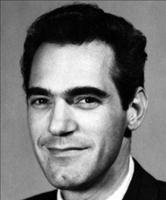
There was a great deal of good-natured ego involved, with a lot of players switching around. A friend of mine, now regretfully passed away, told of playing every type of clarinet in the family, from sopranino down to BBb contrabass; every member of the saxophone family; and oboes, flutes, slide whistles, you name it. A player might sit in one section, and then play in another for pickups, dubbing, or solos. Composers would ask for things hesitantly, then be amazed when the players blasted through the cue with both perfection and nonchalance.
One such group of players was the L.A. Horns, who performed special arrangements by such composers as Gunther Schuller, making use of every possible member of the horn family: descant horns with a much higher range; contrabass horns; and as always, the slobbery, dogged Wagner tubas with their huge, difficult timbre. The members of the group were a mixture of orchestral players, soloists, and Hollywood session players who were phenomenally gifted. Often, a film score from a couple of generations ago with a large horn section might essentially be thought of as a “L.A. Horns score,” capturing their essential sound and personality. As time progressed, the culture of the group was seen in more and more scores by such composers as Jerry Goldsmith and John Williams, whether the actual players were involved or not. In these scores, the aforementioned Wagner tubas (essentially overbuilt French horns) often played a prominent role. Again, the average TV-watcher had much more experience with auxiliary instruments than the orchestration books suggested.
Dennis McCarthy’s huge opening to Star Trek: Deep Space Nine, with Wagner tubas running amok.
So the next time you read a comment such as “Instances of its use are so rare that few orchestras are prepared to supply the instrument,” (Piston, p. 162, The Heckelphone), dig deeper. There is a reason why these instruments exist, and they do get played by someone somewhere. Find out who is doing the playing, and don’t be afraid to add them to your cue if the player can be contracted. The results will be truly out of this world.

